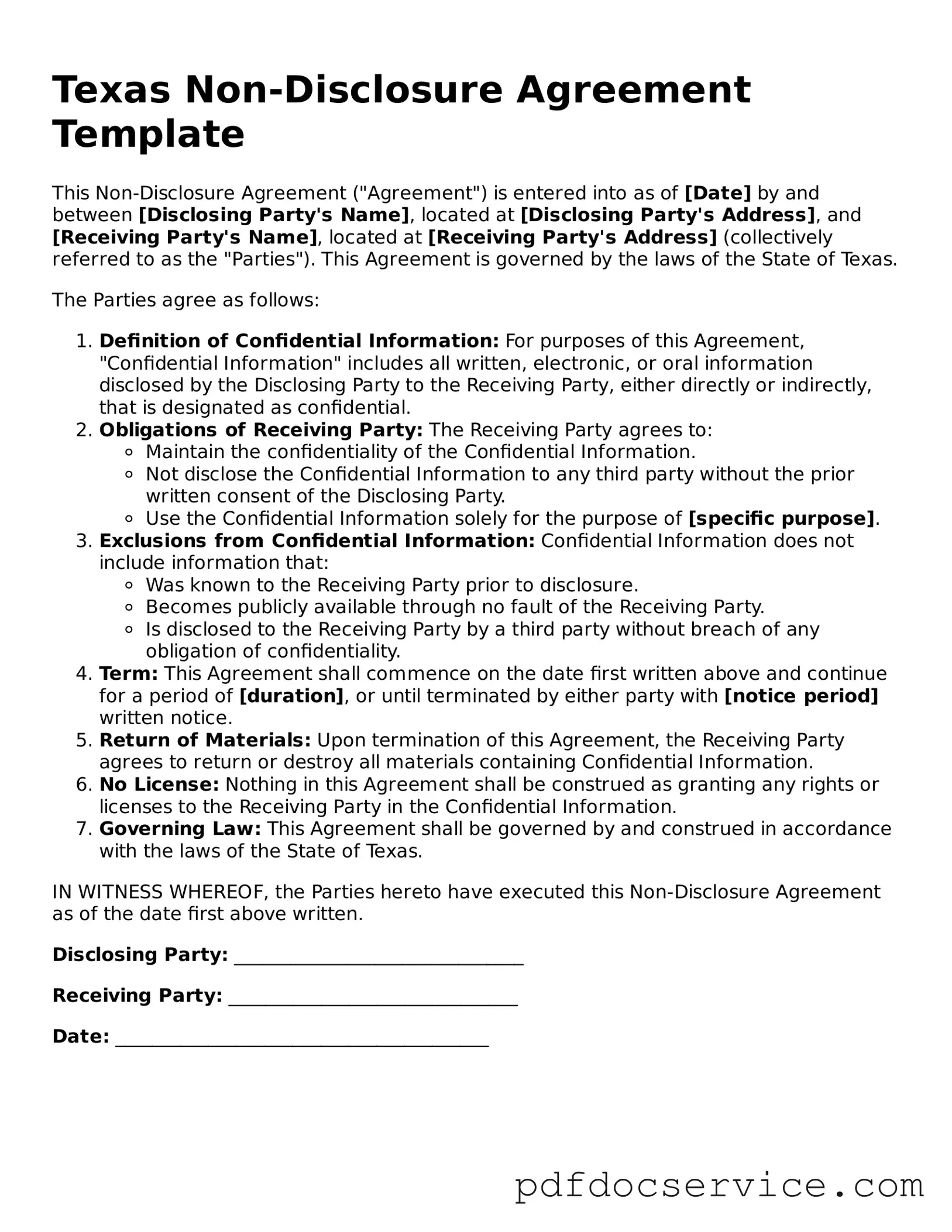Printable Non-disclosure Agreement Template for Texas
A Texas Non-Disclosure Agreement (NDA) is a legal document designed to protect confidential information shared between parties. By signing this agreement, individuals or businesses commit to keeping sensitive information private and not disclosing it to unauthorized third parties. This form is essential for fostering trust and encouraging open communication in various professional relationships.
Open Non-disclosure Agreement Editor
